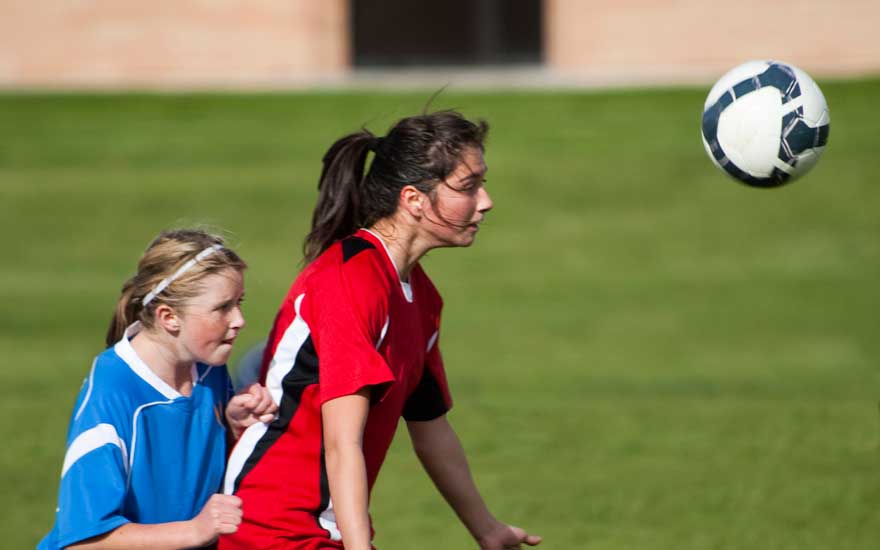
A concussion is a mild traumatic brain injury. Concussions can be caused by a bump, blow, or jolt to the head or body that causes the brain to move inside the skull. In the United States, between 1.6 to 3.8 million sports-related and recreational concussions occur annually. High risk sports include soccer, football, lacrosse, field or ice hockey, and cheerleading. Concussions also can occur from non-sport activities such as falling from a bike or play equipment, a fall, or a motor vehicle accident. No matter the cause, concussions should be treated properly.
In high school comparable sports, females have a higher concussion rate than males. Female athletes have also been shown to experience more post-concussive symptoms and have a greater recovery time as compared with males.
Signs of a Concussion
Concussion symptoms usually appear within minutes of the injury, but some symptoms may take several hours to occur. Anyone with a suspected injury, especially from a sports-related impact, should be examined for a concussion or a spine injury. You do not need to have lost consciousness to have a concussion.
If you suspect your child has suffered a concussion, they may exhibit the following symptoms:
- Headache or a feeling of pressure in the head.
- Nausea or vomiting.
- Balance problems, dizziness, or double or blurry vision.
- Sensitivity to light or noise.
- A sluggish, hazy, foggy, or groggy feeling.
- Confusion or problems with concentration or memory.
You also may notice, or they may express, that they are “just not feeling right” or are “feeling down.”
What to Do If You Suspect a Concussion
- Cease play or immediately remove the athlete from play.
- Get examined as soon as possible by a licensed health care provider. This can include an athletic trainer, physical therapist, or physician.
- Rest for 24-48 hours, and then begin a gradual return to activity that starts with a walking program. Gradually work your way up to walking 30 minutes per day. Note: When starting a concussion recovery program, it is generally safe to walk even if you experience a slight increase in symptoms. Completing an early supervised exercise program has been shown to improve recovery.
- Limit screen time during the first 48 hours. You may resume screen time after 48 hours as long as symptoms do not increase significantly.
- Return to school after 2 to 3 days. Studies support a return to school in this time frame with accommodations if needed.
- Get good nighttime sleep. This is important for recovery, and you may need more nighttime sleep in the early days after a concussion. Try to avoid daytime napping to keep a normal sleep-wake cycle.
- Stay close to an adult after a suspected concussion. A child or athlete should not be left alone after the injury.
- Monitor symptoms closely. If they worsen, seek an evaluation in the emergency room to determine if a more serious brain injury exists.
Sometimes concussion symptoms persist for longer than 7 to 10 days. If so, a physical therapist can assess symptoms and treat lingering issues by guiding you through a safe and personalized recovery program.
Physical therapists are movement experts who improve quality of life through hands-on care, patient education, and prescribed movement. You can contact a physical therapist directly for an evaluation. To locate a physical therapist in your area, visit Find a PT.
Related Resources
- Physical Therapy Guide to Concussion
- Health Center for Concussion
- CDC Concussion Fact Sheet for Athletes
- CDC Concussion Tip Sheet for Parents
The Academy of Pediatric Physical Therapy contributed to this consumer resource. It is for informational purposes only and is not intended to represent the position of APTA Pediatrics.


